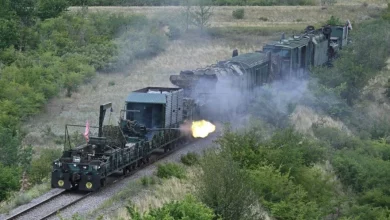China’s Air Force growing: 15 new J-16s and 11 J-20s since January

China’s air power is on the rise, as it bolsters its military ranks with extra Shenyang Aircraft Corporation J-16 multirole and Chengdu Aircraft Industries Company J-20 stealth fighter aircraft. This move underscores China’s relentless pursuit of aerial supremacy.
Since January 2023, China has welcomed an impressive 15 new SAC J-16s and 11 CAC J-20 fifth-generation stealth fighters into its service, as per the analysis by Janes. This surge in new inductions is a clear testament to the People’s Liberation Army Air Force’s [PLAAF] ongoing campaign to phase out its older aircraft and modernize its fleet.
With this latest addition, the PLAAF might have significantly grown. The force now potentially boasts 233 J-16s excluding seven specialist J-16D electronic warfare aircraft] and as many as 127 J-20As, according to Janes Satellite Imagery and Analysis [JSIA].
This data indicates a strategic shift in PLAAF’s air brigades, with J-20As supplementing those equipped with CAC J-10 Meng Long single-engine fighters and J-16s. For instance, within the 56th Air Brigade, the J-20As appear to be taking over from J-10B and J-10AS aircraft, indicating a change of the guard in the unit’s operational lineup.
J-16 combat functions

The Chinese J-16 is a multi-role fighter aircraft developed by the Shenyang Aircraft Corporation. It is based on the Russian Sukhoi Su-30MKK fighter jet and is considered to be one of the most advanced aircraft in the Chinese Air Force.
The J-16 has a maximum speed of Mach 2.5 and a combat radius of over 1,000 kilometers. It is equipped with advanced avionics and weapon systems, including air-to-air and air-to-surface missiles, as well as precision-guided bombs.
The J-16’s combat function is to provide air superiority and ground attack capabilities for the Chinese Air Force. It is designed to engage enemy aircraft and ground targets in a variety of combat scenarios, including air-to-air combat, air-to-ground strikes, and reconnaissance missions. The J-16 is also capable of performing electronic warfare and suppression of enemy air defenses, making it a versatile and valuable asset in modern air warfare. Its advanced capabilities and growing numbers demonstrate China’s commitment to modernizing its military and expanding its global influence.
About J-20
The Chinese J-20 is a fifth-generation stealth fighter aircraft developed by the Chengdu Aerospace Corporation for the People’s Liberation Army Air Force [PLAAF]. The J-20 is designed to perform air superiority missions and ground attack roles. It is equipped with advanced avionics systems and stealth technology, making it difficult to detect by radar.

The J-20 has a top speed of Mach 2.5 and a range of approximately 2,000 miles. It is armed with a variety of air-to-air and air-to-surface missiles, as well as a 30mm cannon. The J-20’s advanced capabilities have raised concerns among some countries in the region, particularly the United States and Japan. The aircraft’s stealth technology and long-range capabilities could potentially challenge the air superiority of these countries in the event of a conflict.
China has been rapidly expanding its air force in recent years, with a focus on developing advanced fighter aircraft like the J-20. This growth has raised concerns among some countries in the region about China’s military ambitions and its potential to challenge the existing balance of power.
J-16 and J-20 could work together
In a hypothetical military battle or situation, the J-16 and J-20 could work together in a coordinated air attack. The J-20 could use its stealth capabilities to penetrate enemy air defenses and take out high-value targets, while the J-16 could provide air support and engage enemy aircraft in dogfights.

Another hypothetical military situation where the J-16 and J-20 could work together is in a long-range strike mission. The J-20’s stealth capabilities and long-range capabilities could be used to penetrate deep into enemy territory and take out critical infrastructure or military targets. The J-16 could provide additional air support and engage any enemy aircraft that attempt to intercept the J-20.
The J-16 and J-20 could also work together in a defensive scenario. For example, if China’s airspace is threatened by incoming enemy aircraft, the J-20 could engage the enemy aircraft while the J-16 provides additional air support and defends against any incoming missiles or attacks. The J-16 could also be used to escort transport planes or other aircraft in a defensive capacity.
Overall, the J-16 and J-20 are both advanced fighter jets that could work together in a variety of hypothetical military situations. Their unique capabilities and strengths could be used to complement each other and provide a powerful force for China’s Air Force.
J-16 is the ‘American F-15E’
China’s J-16 is a multi-role fighter aircraft that is comparable to the American F-15E Strike Eagle. Both aircraft are designed for air-to-air and air-to-ground missions, and they have similar capabilities in terms of range, speed, and weapons systems.

However, the J-16 has some unique features that set it apart from the F-15E. For example, it has a larger payload capacity and can carry a wider range of weapons, including Chinese-made missiles and bombs. Additionally, the J-16 has a more advanced electronic warfare suite that allows it to jam enemy radar and communications systems.
Overall, while the J-16 and F-15E are similar in many ways, the J-16 has some distinct advantages that make it a formidable aircraft in its own right.





